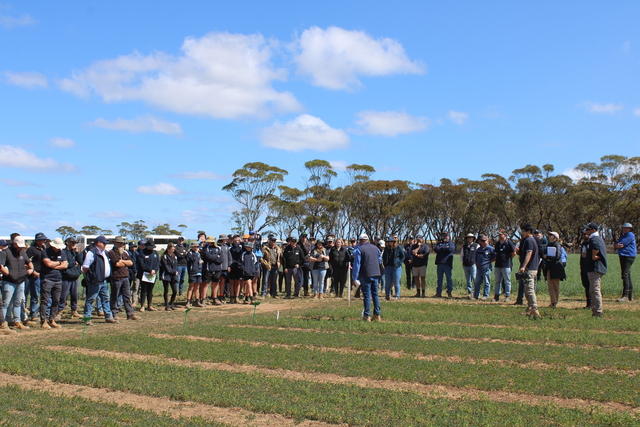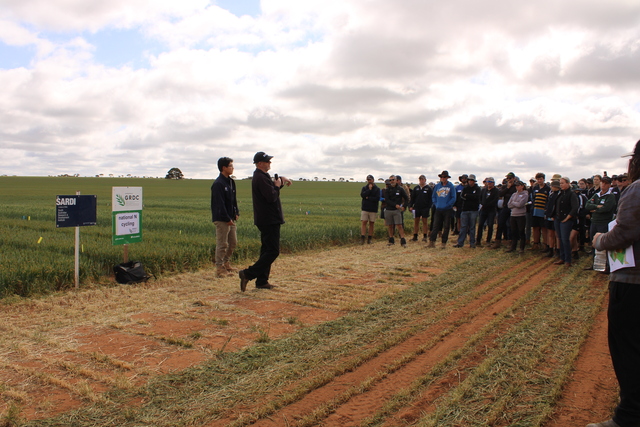
Nearly 150 growers and industry representatives attended the South Australian Research and Development Institute Minnipa Agricultural Centre Field Day this month to learn about the latest research in low rainfall farming systems.
A variety of topics were covered, including nitrogen cycling, GRDC National Variety Trials and plant breeding, crop establishment, sandy soils, barley grass, brome grass, SA Discovery Farms, optimising barley biomass, geospatial herbicide risk, strip and disc systems, virtual fencing, herbicides in lentils and a grain market update.
A key panel session – What have we learnt from the dry start? – looked at past research on dry sowing and some of the lessons from the dry start to this year’s cropping season.
SARDI’s research scientist at Minnipa Amanda Cook provided key insights from the South Australian Grains Industry Trust funded best management practices for early crop establishment project, while CSIRO’s principal research scientist and team leader Dr Therese McBeath informed growers on phosphorus nutrition and crop establishment research.
Upper Eyre Peninsula grower Bruce Heddle, EPAGnFert agronomist Kevin Dart and Hollitt Consulting’s Josh Hollitt outlined their experiences this season, with Kevin and Josh also providing advice on herbicide interactions and weed control.
The panel members finished the session by providing their key messages from this season, which included:
• Dry sowing early with barley is a good management option for early plant establishment.
• Increasing seeding rate in wheat seed can result in better plant establishment, especially on grey calcareous soils.
• Ensuring plants have access to phosphorus is important, in a dry season consider placement to avoid toxicity but close enough that the plant roots can access the fertiliser early.
• Attention to detail is needed with sowing depth as furrows and herbicides may move with a longer time until crop establishment.
• Summer weed control was essential to save soil moisture for the in-season crop.
• Consider flexibility with the seeding program and paddock selection. This may include sowing heavier ground later to avoid the germination process beginning without enough moisture to establish and moving from sowing cereal paddocks to lentils immediately before or after a rainfall event.
• Paddock management and weed control should be undertaken in the 12-18 months prior to cropping.
New machinery for the centre’s farm was displayed during the day, including land rollers and a disc seeder.
This new equipment will allow for lentil and disc seeding broadacre demonstrations on site.


